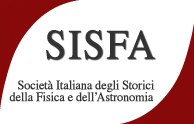Speaker
Description
The nanostructures research has been exploring new modelling and techniques in the fields of Sciences and Applied Sciences & Technology. Outstanding results have been enriching the scientific knowledge from Physics to Biology, from Engineering to Medicine continuously achieving new milestones. In in the end 1959, Richard Phillips Feynman (1918–1988) gave a talk to the American Physical Society in Pasadena, which explored the immense possibilities afforded by miniaturization research. This talk was transcribed in famous “There’s Plenty of Room at the Bottom” (1964, March 13th). It appears to be, according to the current historiographical––and scientific narrative, the inspiring cornerstone for scientists in Nanotechnology research. Self-assembling machines, atom manipulation, nano–carriers in medicine, new materials like graphene and fullerene, innovations in electronic microscopy are just a few of the new discoveries whose origins are commonly said to lie on Feynman’s work. In the following decades, Feynman's heritage has been. The argument on "Plenty of Room" 's framework opened new historiographical debate: Is Feynman's framework the ispiring source for nano research? In literature, interesting examples of different points of view about this work can be found in several sources. As part of my current doctoral research at Lille University (supervised by prof. Raffaele Pisano), our talk aims at discuss the influence of the Feynman's “There’s Plenty of Room at the Bottom” on the theoretical and experimental developments of nanotechnology, including the epistemic and controversial historiographical debates on the subject.
Selected References
Bayda S, Adeel M, Tuccinardi T, Cordani M, Rizzolio F (2020) The History of Nanoscience and Nanotechnology: From Chemical-Physical Applications to Nanomedicine. Molecules 25/112
Bussotti P, Pisano R (2020) Historical and Foundational Details on the Method of Infinite Descent: Every Prime Number of the Form 4n+1 is the Sum of Two Squares. Foundations of Science 1:1-32
Drexler KE (1988) Engines of Creation: The Coming Era of Nanotechnology. New York, Doubleday-Anchor Books.
Feynman RP (1960) There's Plenty of Room at the Bottom. Engineering and Science 23/5:22-36
Feynman RP (1984) Tiny machines: a lecture on nanotechnology.
Madhuri S (2019) History of Nanotechnology. From Prehistoric to Modern Times. Beverly, Scrivener Publishing, Wiley
Mansoori GA (2017) An Introduction to Nanoscience & Nanotechnology. In Ghorbanpour M., Manika K., Varma A (Editors) Nanoscience and Plant-Soil Systems. Cham, Springer, pp. 1-20.
Myers TG, MacDevette MM, Font F, Cregan V (2014) Continuum mathematics at the nanoscale. Journal of Mathematics in industry 4:11.
Pisano R, Sozzo S (2020) A Unified Theory of Human Judgements and Decision-making under Uncertainty. Submitted to Entropy Special Issue Andrei Khrennikov A, Bagarello F (eds). Quantum Models of Cognition and Decision-Making.
Pisano R, Anakkar A, Pellegrino EM, Nagels M (2019) Thermodynamic Foundations of Physical Chemistry Reversible Processes and Thermal Equilibrium into History. Foundations of Chemistry 21:297–323
Toumey C (2008) Reading Feynman Into Nanotechnology: A Text for a New Science. Techné: Research in Philosophy and Technology 12/3:133-168

